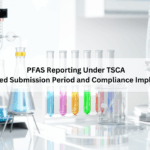A Safety Data Sheet (formerly called Material Safety Data Sheet) is a detailed informational document prepared by the manufacturer or importer of a hazardous chemical. It describes the physical and chemical properties of the product. SDS contains useful information such as toxicological properties, flash point, procedures for spills and leaks, handling and storage guidelines, and exposure control, transportation guidelines, fire Hazards and first aid measures.
SDS sheets are created for a variety of hazards materials and chemicals including all compressed gases, flammable and combustible liquids, oxidizing materials, poisonous or infectious material, corrosive material and dangerously reactive materials.
The Hazard Communication Standard by WHS, requires chemical manufacturers, pharmaceutical industry, distributors, and importers to provide new Safety Data Sheets in a uniform format that includes the section numbers, headings, and associated information below.
Section I. Identification
Section II. Hazardous Identification
Section III. Composition Information
Section IV. First-Aid Measures
Section V. Fire-Fighting Measures
Section VI. Accidental release measures
Section VII. Handling and Storage
Section VIII. Exposure Controls and Personal Protection
Section IX. Physical and Chemical Properties
Section X. Stability and Reactivity
Section XI. Toxicological Information
Section XII. Ecological Information
Section XIII. Disposal Considerations
Section XIV. Transport Information
Section XV. Regulatory Information
Section XVI. Other Information
Important Objectives of Safety in Chemical and Pharmaceutical Industries.
The purpose of the Material Safety Data Sheet information is to convey chemical safety and hazard information to the end user (employees exposed to hazardous chemicals, employees who store dangerous chemicals, and emergency responders such as: firefighters, hazardous material crews, and emergency medical technicians).
- Provides essential information of the provider along with the chemical name and its recommended uses
- SDS provides basic understanding to the workers, the harmful effects of industrial hazards.
- SDS defines the basic relationship between hazard and risk.
- SDS focuses on type of toxicity on the environment by industrial hazards. It provides knowledge on the most toxic environmental hazardous substances.
- SDS provides valuable information about possible chances of accidents due to spills, leaks or releases to prevent loss of life and permanent disability of any industrial employee, any damage to machine and material as it leads to the loss to the whole establishment.
- It includes containment and cleanup practices to prevent or minimize exposure to people, properties, or the environment.
- SDS provides First-aid information for initial care that should be given by untrained responders to an individual who has been exposed to the chemical.
- SDS provides guidance on the safe handling practices and conditions for safe storage of chemicals, including incompatibilities.
- SDS eliminates accidents that cause work stoppage and production loss, reduces workman’s compensation, insurance rate and all the cost of accidents. This increase production means to a higher standard of living.
- SDS provides basic education to all members regarding the safety principles to avoid accidents in industry.
- SDS is required to achieve better morale of the industrial employees.
- Information in regards to when the SDS was prepared or when the last known revision was made and where the changes have been made to the previous version may be provided.
To conclude that knowing and understanding the risk of hazardous facility and hazard release are the most important segments of an optimal pharmaceutical safety management. An effective hazard and risk assessment allows development of effective action plan and implement strategies and tactics.
Talk to our MSDS Expert





